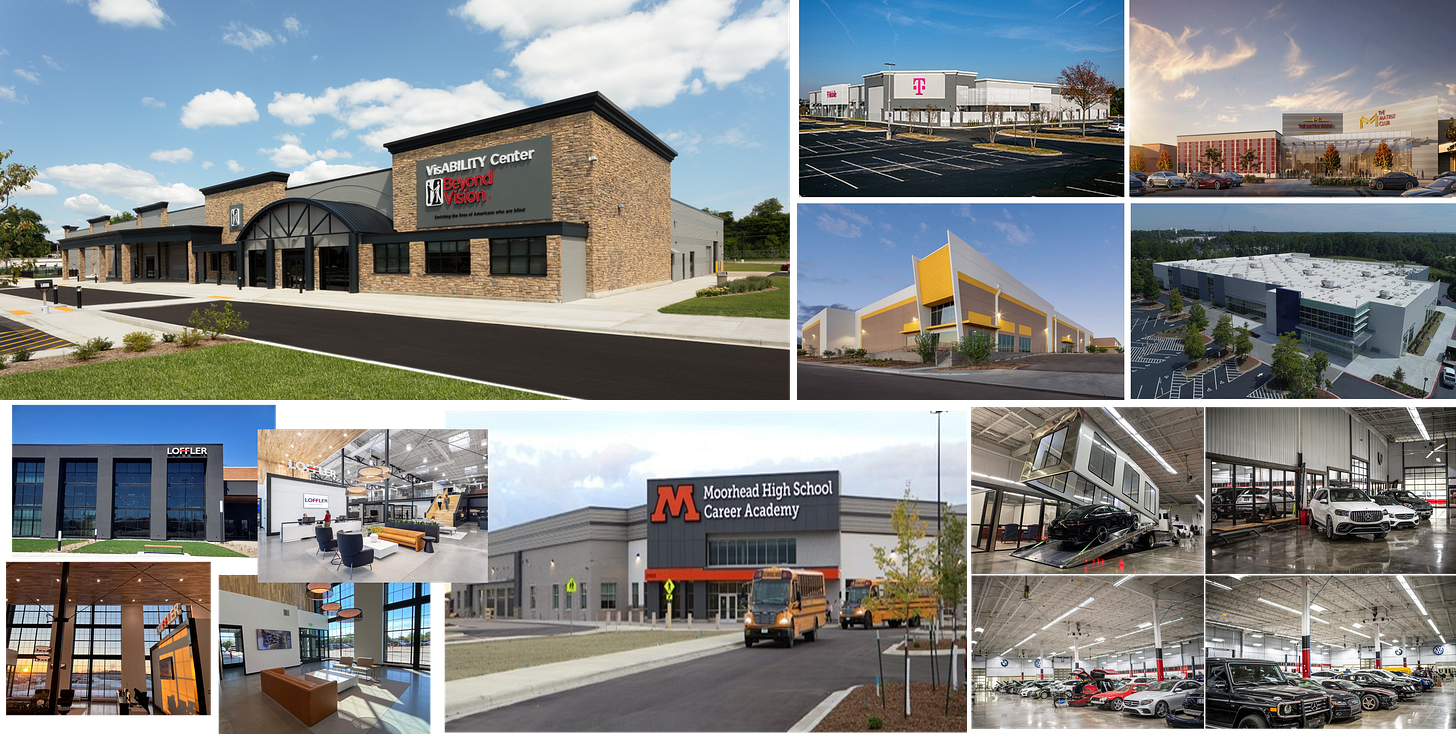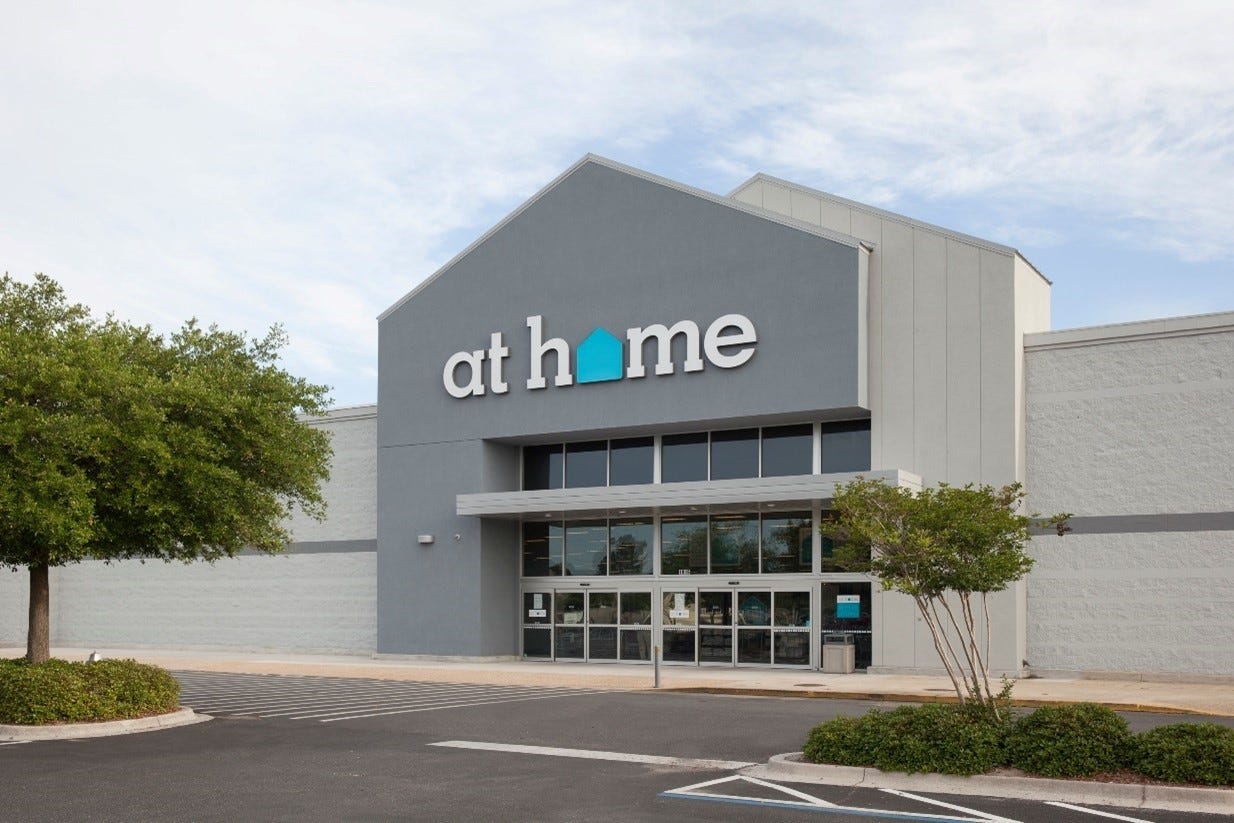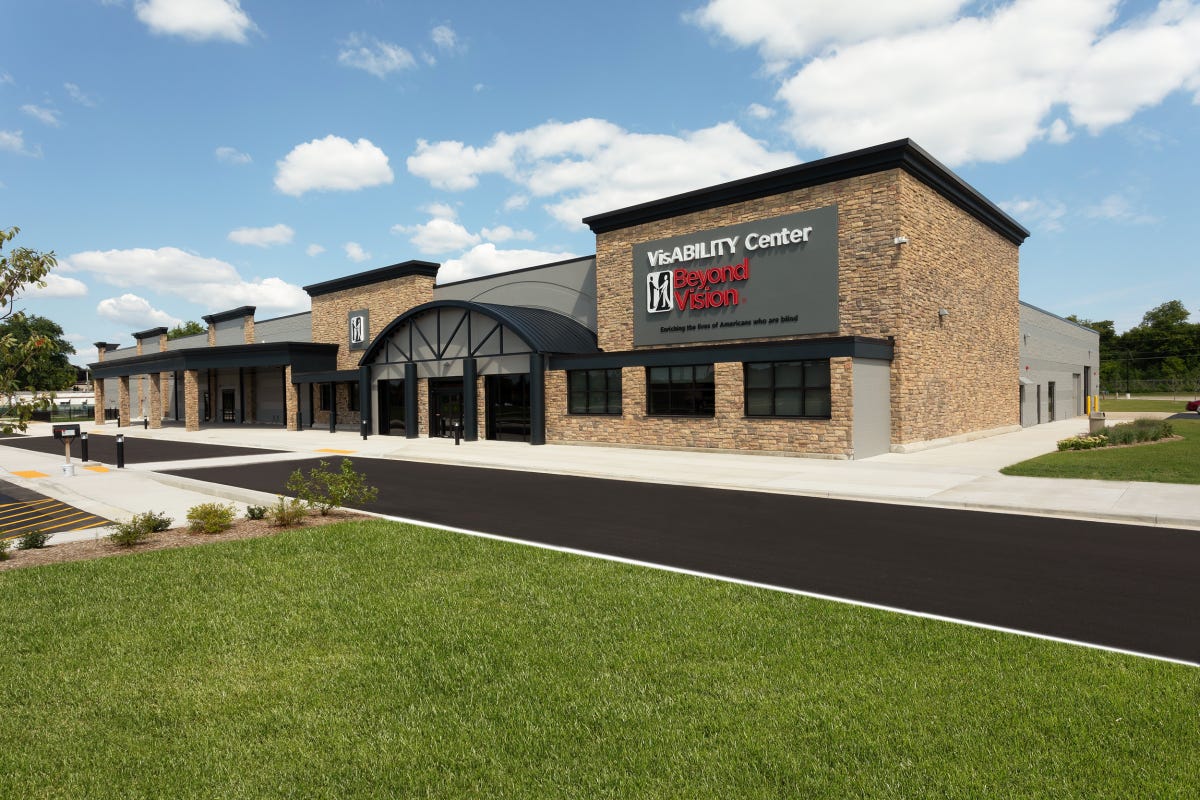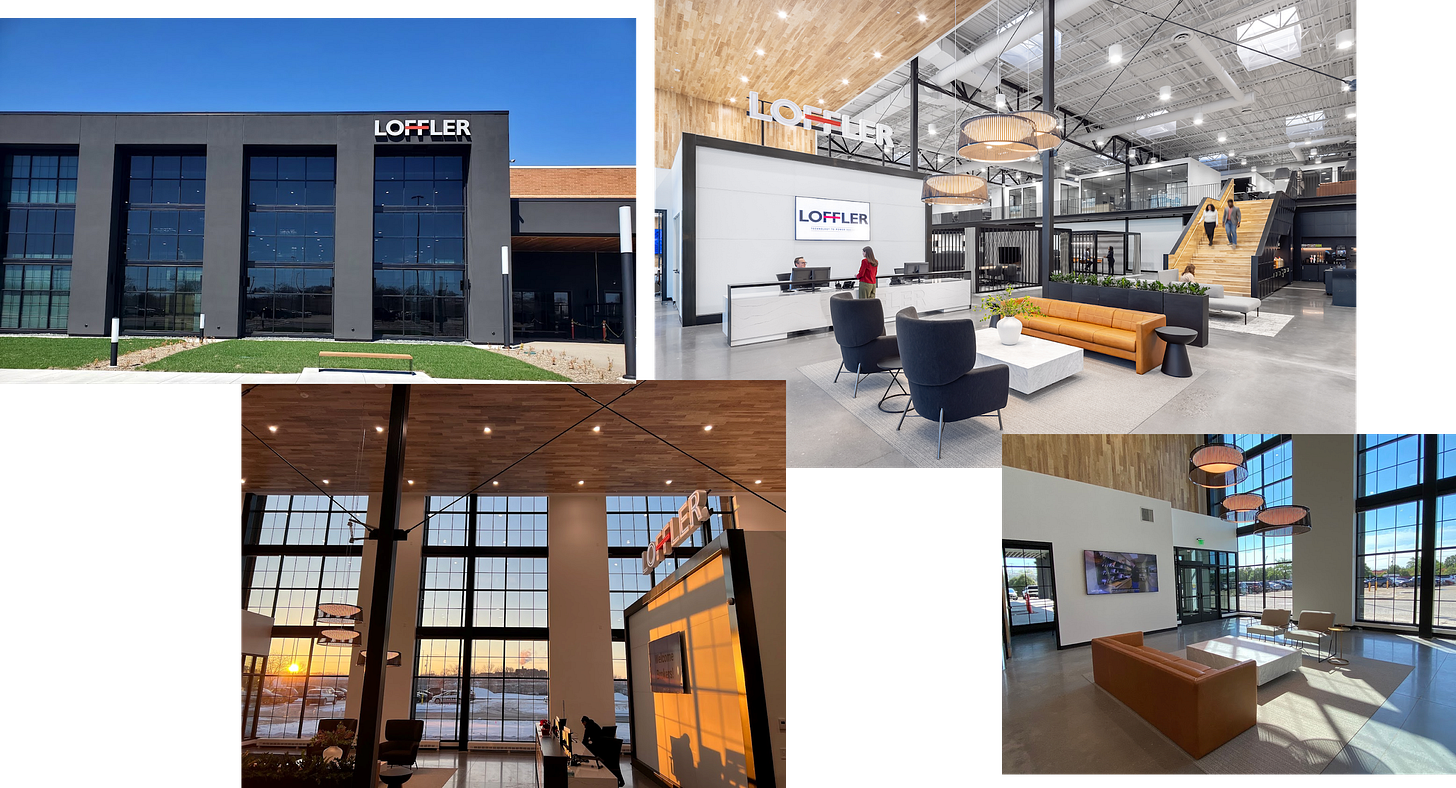In January 2018 Walmart closed 60 Sam's Clubs in the U.S.
And vacated nearly 8 million square feet of retail real estate.
But 6 years later the story is much different.
~90% of these sites have been re-tenanted, repurposed or redeveloped.
Into many examples of both conventional and unique adaptive reuse.
A Few Are Still Warehouse Club Stores
The most logical and convenient re-use of a former Sam’s Club?
As another club store occupied by a competitor such as Costco or BJ’s Wholesale.
For instance, Costco is currently putting the finishing touches on a retrofit of a ~140,000 square foot former Sam’s Club in Anchorage, Alaska.
Costco entered into a lease with the building owner and spent approximately $5 MM to develop a small building addition, do facade work and reorient the parking area.
As a result, Costco is opening much sooner than would have been possible had it instead built a brand new club from the ground-up.
The site will be home to Costco’s new Business Center concept which currently accounts for less than 5% of the chain’s warehouse club stores.
But the new location in Anchorage will be at least the third conversion of a former Sam’s Club warehouse into a Costco Business Center.
But warehouse club backfills account for only a handful of Sam’s Club re-tenantings.
Why?
It has a little something to do with the owner of the former Sam’s Club real estate:
41 of the 60 clubs shuttered in 2018 were corporately owned by Walmart.
Walmart rarely sells properties to its competitors - and often places use restrictions on buildings that it sells to real estate developers.
This prevented Walmart's direct rivals like Costco, BJ’s, Target and Amazon from locating in many - but not all - of the former Sam's Club sites.
Some Sites Are Occupied By Other Retailers
Perhaps the next likely reuse of a former Sam’s Club is by another single retailer.
Some large format retail operators like The Home Depot and Floor & Decor have taken former Sam’s Club sites.
At Home Group Inc., a large format home goods retailer, also purchased six former Sam’s Clubs for use as retail stores.
But there are few retail tenants that operate ~140,000 square foot stores.
And even fewer that don’t compete head-on with Sam’s Club and Walmart.
Multiple Sites Now Have Automotive Uses
The former Sam’s Club buildings are well suited for automotive-related uses.
Many of the former Sam’s Clubs had offered tire sales and auto service - and were already a “known” destination for automotive uses.
Most Sam’s Clubs are also freestanding buildings with high ceilings, open floor plans, and grade level doors which can work well for vehicle sales, storage and service.
Additionally most Sam’s Club buildings were also on large land parcels with plenty of parking, good access and excellent signage.
Classic Car Motoring now operates a collision repair and car storage operation in a 140,000 square foot former Sam's Club in Irondale, Alabama.
The facility features a 19,000 square foot area dedicated to collision repair and accessory installation on commercial size vehicles such as the Sprinter, Ford Transit, and Ram ProMaster - and it is the only Alabama repair center authorized by Mercedes-Benz and Tesla.
There is also a 12,000 square foot "Vault" where Classic Car Motoring stores over 100 vehicles for car owners that do not have room at home.
And there are even five acres of outside space and a 17,000 square foot indoor “club” area - complete with on-site catering kitchen - that can be rented for events such as car shows, cruises, meetings or parties.
Another unique Sam’s Club-to-automotive conversion is the We Are Airstream dealership in Chandler, Arizona.
At 136,000 square feet, the We Are Airstream Superstore is the largest U.S. dealership for Airstream trailers, an American brand best known for its rounded and polished coaches.
A climate controlled sales showroom makes up ~40% of the dealership building with service and storage in the remaining area.
A Climate Controlled Self Storage Conversion
Climate controlled self storage is an increasingly common adaptive reuse of former Big Box retail sites.
And the former Sam’s Club buildings are no exception - despite their significant size.
For instance, A former 140,000 square foot Sam’s Club in Syracuse, New York was converted into a climate controlled facility with 860 indoor and drive-up storage units.
Other Sam’s Clubs Feature Unique Adaptive Reuses
Perhaps the most unique Sam’s Club conversion is the VisABILITY Center developed by Beyond Vision, a nonprofit career agency for the blind in Wisconsin.
The 130,000 square foot VisABILITY Center is a workplace designed for the visually impaired and features a manufacturing area, distribution center, offices and community space where blind and low vision employees complete machining, assembly, packaging, and customer support work for various companies.
The VisABILITY Center building was outfitted with textured flooring which aids the navigation of individuals that walk with a cane, ambient lighting to minimize glare, and acoustic insulation to dampen stray sounds and ambient noise, as sound helps blind and low vision individuals orient themselves in space.
Beyond Vision hopes that it will also serve as a model for the future design of buildings that are principally used by the blind and visually impaired.
Other former Sam’s Clubs have also been redeveloped into a variety of uses including:
A career academy for high school students in Moorhead, Minnesota
A T-Mobile call center in Virginia
A convention, banquet, and performance venue in Illinois
A life science lab in North Carolina
A Class A Warehouse in Arizona
And a corporate headquarters, warehouse and distribution facility in the Minneapolis suburb of St. Louis Park for Loffler Companies, a provider of office copiers & printers, IT solutions and business technology services.
Loffler made sustainability a focus in its headquarters project and chose a reuse of the former Sam’s Club in part because The National Trust for Historic Preservation’s Green Lab estimates that it can take up to 80 years before energy efficient features of a new building make up for the environmental impact from its construction.
A New Proposed Conversion For Multiple Re-Uses
A public hearing was held last month in Batavia, Illinois over a proposed Sam’s Club conversion that would include both a self-storage facility and electric automobile dealership.
This proposed project envisions the electric vehicle dealership (rumored to be Tesla) occupying ~45,000 square feet and taking the entire storefront of the existing building.
The remaining ~80,000 square feet of building - and a proposed ~45,000 square foot second floor addition - would serve as climate controlled self storage operated by Cubesmart.
If the plans are approved, it would pave the way for the first joint Tesla dealership and Cubesmart storage facility in a single building.
And provide for yet another unique adaptive reuse of a former Sam’s Club.














